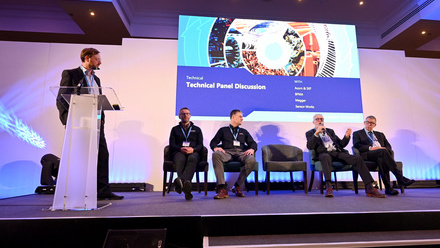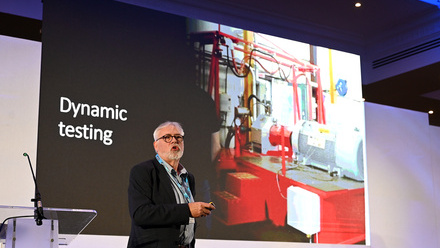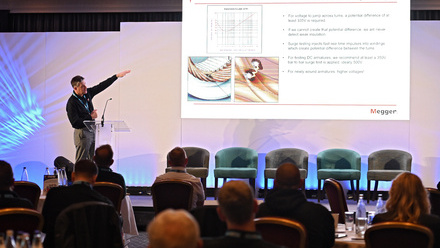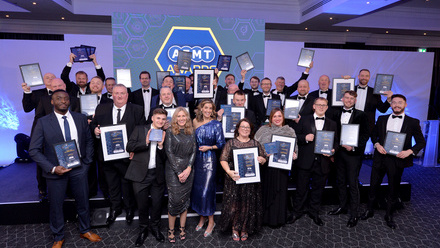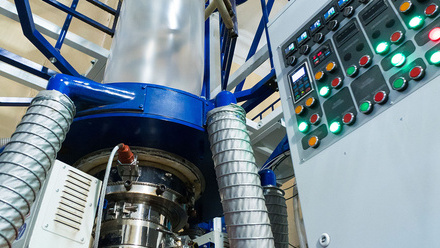AI and the Future Of Industrial Maintenance
surveying this year’s State of Smart Manufacturing Report, it’s hard to deny that despite the many challenges facing manufacturers, a certain optimism shines through, and advanced technologies like AI are giving manufacturers hope. While AI technology is still evolving, a surprising 83% of respondents to the report anticipate using generative AI this year, propelling it to number one on the list of 2024’s top technological investments. That’s an interesting turn of events because it wasn’t long ago that most players in the space were sceptical, even a bit afraid, of AI.
THE STATE OF SMART MANUFACTURING
Many conversations about AI and machine learning tend to centre around the technical aspects of these new solutions. They are filled with narratives about their ability to parse through data or solve difficult operational challenges, but they often fail to acknowledge how the humans behind these tasks will be impacted.
In the past there has been an element of distrust around AI and an element of the unknown.
But, faced with new challenges such as economic headwinds, labour shortages, skills gaps, and cybersecurity concerns, the conversation is shifting.
Now, instead of focusing directly on the technology, people are asking, ‘How is AI technology ultimately going to transform and improve the lives of the human beings who are actually working on the plant floor?’
Naturally, this leads to questions about how AI technology can ultimately benefit maintenance teams. The team at Fiix has identified five key areas where the maintenance function can benefit.
• Finding anomalies in a sea of maintenance data: As today’s manufacturing operations grow in complexity, the amount of data generated daily grows to a scale that is simply unmanageable by humans alone. AI really shines here – digesting huge quantities of maintenance data, such as sensor data from a motor or temperature data from a PLC, and identifying the anomalies that could indicate failure.
• Increasing efficiency through automation: Much of the work that maintenance technicians perform daily is extremely valuable. Creating work orders, analysing data, and generating reports; all these tasks can now be done by AI tools, freeing up valuable technician time to focus on purely value-adding activities and making the most of scarce labour resources.
• Filling labour shortages and knowledge gaps: With the recent rise of accessible prescriptive maintenance tools, generative AI can now be trained on asset and maintenance data to produce detailed, complete, and accurate work orders. Not only does this save time, easing the pressures resulting from a shorthanded workforce, but it can go a long way towards filling in the knowledge gaps left by attrition and a rapidly changing technological landscape. Simply put, we’re at a point where AIpowered tools can increasingly complement humans in many daily maintenance tasks, serving as a team’s expert copilot.
• Improving data integrity: Like any human activity, manually gathering maintenance data and collating it into reports carries the real risk of human error. That also means the risk of compromised decisions based on bad data. To ensure data is always of the highest integrity, an AI-powered analytics tool can automatically collect, analyse, and action data. Plus, it’s much faster to use AI than assembling these reports by hand.
• Tracking progress on operational goals: As the saying goes, you can’t improve what you don’t measure. With each closed work order, maintenance teams are adding to the wealth of intelligence that AI analytics tools can use to generate insights on important metrics such OEE and other KPIs. And this, in turn, means solid data with which to make the decisions needed to drive a maintenance program forward.
TURNING AI INSPIRATION INTO AI ACTION
Of course, these are all great ideas, but they don’t mean much without effective implementation. And that means contending with change management. It’s really hard to orchestrate the change inside an organisation so you can ultimately adopt the new technology – something many maintenance teams know all too well.
When asked how teams can truly make change stick, its important to reframe the motivation behind adopting new technologies. Where I’ve seen successful change management occur really boils down to the business case behind ‘how is this technology ultimately going to transform and improve and make the life of the human beings who are actually working on the plant floor better?’
Not only does this put a justified focus on the human impact of new technologies, but when framed in that context, it tends to become much easier to get buy-in across the organisation and certainly a lot easier to get a deployment off the ground. With the emergence of AI and especially generative AI technologies, strategies like prescriptive maintenance have suddenly become highly accessible to maintenance teams – and highly effective.
Rather than having to rely on somebody coming through with an instruction manual and asset manual, et cetera, or going on the Internet to find that information, what if you had a tool that could automatically mine some of that information?
With this new technology, Fiix will mine historical data and present it to you so that now you can focus on the task at hand rather than doing some of that research and doing some of that grunt work. Whereas it used to take a Fortune 500-size budget and a team of data scientists, this new generation of AI-powered maintenance solutions can be implemented in just two weeks. Plus, they’re budget friendly.
As we think about the benefit of prescriptive maintenance, it really is a copilot that works alongside the people on the factory floor who are doing the maintenance and acts as a tool, as an aide to help everybody get their job done better. Among AI’s many capabilities, prescriptive maintenance might be the single most transformative for maintenance teams in the coming years. And to think, this was simply out of reach for most teams before the advent of generative AI.
Ultimately, I think where we see success is where clients have successfully articulated the human benefit of these technologies across the organisation and thus enabled the change to take effect and achieve a successful deployment and successful results.

